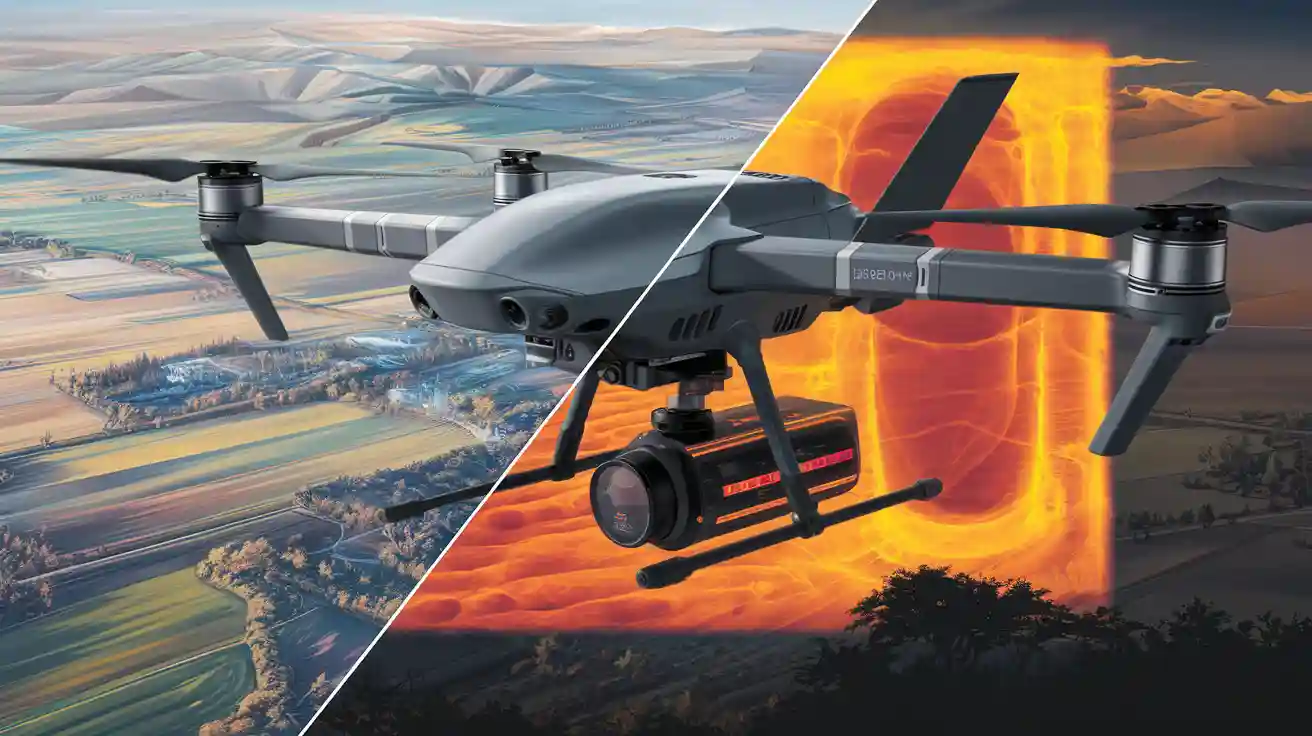
The Turing L256 uncooled infrared module changes what you expect from drone thermal imaging. You need small size, low power, and strong performance for today’s drone jobs. Drones often have short battery life and can only carry a little weight, so every gram and watt is important. The Turing L256 uncooled infrared module helps with these problems because it is light and uses energy well. Drone tracking, thermal tracking, and infrared tracking all get better with this module’s advanced imaging. The market for drone thermal imaging cameras is getting bigger:
The drone analytics market may grow from USD 5.2 billion in 2023 to USD 53.9 billion by 2033. This is because people need real-time imaging and tracking.
The drone camera market, which includes thermal imaging cameras, could reach USD 509.8 billion by 2037. Surveillance and tracking make up 39.5% of this market.
Making infrared thermal camera technology smaller and easier to use helps with tracking in farming, security, and checking buildings.
Metric/Aspect | Data/Value |
|---|---|
USD 1.5 Billion | |
Projected Market Revenue (2033) | USD 4.2 Billion |
CAGR (2026-2033) | 12.3% |
Regional Market Share (2023) | North America: 35%, Asia Pacific: 30%, Europe: 25%, Latin America & MEA: 5% each |
Leading Thermal Drone Type (2023) | 120W sub-segment with 40% market share |
Market Drivers | Surveillance, inspection, agriculture, firefighting, infrastructure assessment |
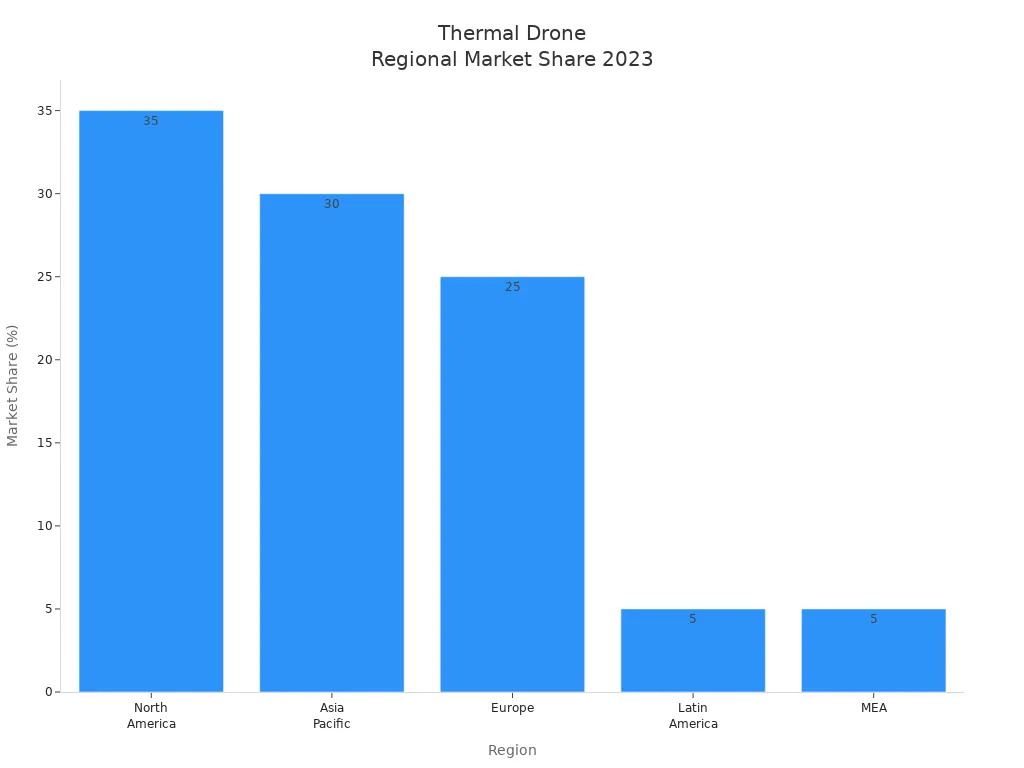
You can trust the Turing L256 uncooled infrared module to give great tracking, imaging, and camera performance for any drone job. This Uncooled Infrared Module gives you an advantage in infrared tracking and thermal imaging, helping you stay ahead as the industry grows fast.
Key Takeaways
The Turing L256 module helps drones see heat clearly and fast. It lets you find people, animals, and machines with ease.
It is small and does not use much power. This helps your drone fly longer and carry more things. It works well with many drone types and tasks.
You get smooth live thermal video at 50Hz. This helps you make quick choices and follow moving things right away.
The module connects easily to many drones with different interfaces. This gives you more options and makes setup simple.
Advanced image processing keeps thermal pictures sharp and clear. It works even in bad weather, so you can trust your drone to track well every time.
Key Advantages
Performance Boost
You want your drone to do better on every job. The Turing L256 helps your drone work much better. This module has a high-definition thermal imaging sensor. You get clear thermal pictures even at night or in low light. The camera inside helps you find heat differences quickly. You can use this for drone surveillance, search and rescue, or watching animals. The thermal camera shows things that normal cameras cannot see. You can follow people, animals, or machines easily. The infrared detector finds small changes in temperature. This helps with tracking and watching moving things. You can use the drone for checking buildings, farm work, or security. The camera always gives sharp thermal images. You can trust the infrared thermal camera for hard jobs. The Turing L256 makes your drone smarter and more helpful.
Tip: Try the Turing L256 for drone surveillance and tracking. You will get better results every time.
Real-Time Imaging
You need real-time imaging to make quick choices. The Turing L256 gives your drone a 50Hz frame rate. This means you get smooth thermal video with no delay. You can watch live thermal images as your drone flies. This helps with fast tracking and watching moving things. The camera shows what is happening right now. You can use tracking algorithms to follow moving targets. The drone can spot heat changes very fast. This is good for surveillance, rescue, or checking things. The camera works well in many places, like cities or farms. You can use the drone for many jobs, like security, searching, or checking things. The high-definition thermal imaging helps you see important details. The Turing L256 lets you act fast and stay ahead.
You get real-time thermal images.
You can use tracking algorithms for better results.
Your drone becomes a smart tool for watching and tracking.
Turing L256 Uncooled Infrared Module Features
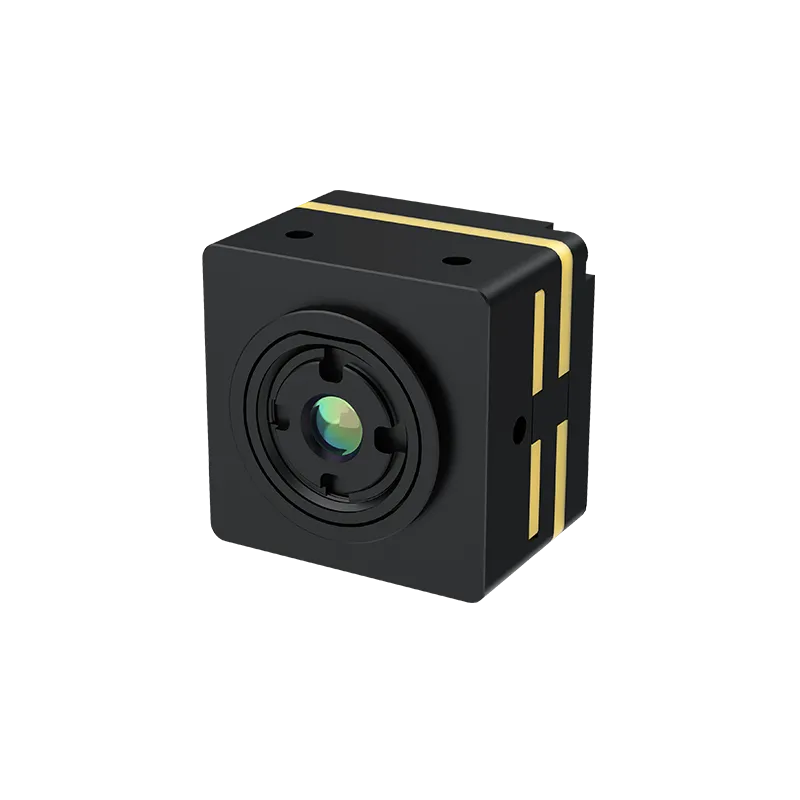
Compact Design
You want your drone to fly longer and carry more tools. The Turing L256 uncooled infrared module helps with this. This camera module is only 18×18mm in size. It weighs about 8.7 grams with a 3.2mm lens. You can put it in small drones without making them heavy. It uses just 0.35W of power at 25°C. This means your drone’s battery lasts longer. Other infrared modules are bigger and use more power. The Turing L256 is better for size, weight, and power. You get a camera that is good for tracking, thermal imaging, and watching things.
Here is a quick look at the technical details:
Specification Category | Details |
|---|---|
Detector Type | Uncooled VOx infrared detector |
Resolution | 256×192 pixels |
Frame Rate | 25 Hz |
Pixel Pitch | 12 μm |
Spectral Band | 8–14 μm |
NETD | ≤50 mK @ 25°C |
Power Supply Range | 3.8–5.2 V DC, 1.8 V, 3.3 V |
Typical Power Consumption | ≤0.3 W (at 25°C, without extension) |
Physical Dimensions | 18×18 mm (without lens and extension) |
Weight | Approximately 8.7 g (with 3.2 mm lens) |
Operating Temperature Range | -20°C to +60°C |
Storage Temperature Range | -45°C to +85°C |
Humidity | 5% to 95%, non-condensing |
Certification | RoHS 2.0 |
You can use this camera in many places. It works in hot, cold, dry, or wet weather. The Turing L256 uncooled infrared module is strong and reliable for any drone job.
Flexible Interfaces
You need a camera that connects easily to your drone. The Turing L256 uncooled infrared module gives you many ways to connect. You can use DVP for digital video. USB 2.0 lets you move data fast. Analog video works for older systems. The camera also has digital video output with LVCMOS/BT.1120. UART lets you use serial communication. These choices help you use the camera with many drones and controllers. You can switch between systems without problems.
Here is a table to show the interface options:
Interface Type | Description / Benefit |
|---|---|
DVP | Digital Video Port interface for video data transmission |
USB 2.0 | Standard USB interface for easy connection and data transfer |
Analog Video | Supports traditional analog video output |
Digital Video (LVCMOS/BT.1120) | Provides digital video output compatible with modern standards |
UART | Serial communication interface for control and data exchange |
Mechanical Interface | Dimensions and resolution consistent with L384 module, aiding OEM compatibility |
You can use the Turing L256 uncooled infrared module with many drone models. The camera fits with both new and old systems. You can pick the field of view you want, from 20° to 90°, by changing the lens. This makes the camera good for tracking, thermal imaging, and other drone jobs.
Tip: Try different interfaces to see which one works best for your drone and camera setup.
Image Processing
You want clear images for tracking and thermal detection. The Turing L256 uncooled infrared module gives you advanced image processing features. You can change brightness and contrast by hand or let the camera do it. The camera supports black-hot and white-hot polarity. You can pick from many color palettes to make thermal images easier to read. The digital noise reduction removes unwanted signals. Your images look smooth and clear. The camera also has detail enhancement. This helps you see small temperature differences.
Here is a table of the image processing features:
Feature Category | Advanced Image Processing Features |
|---|---|
Noise Reduction | Digital filtering noise reduction |
Detail Enhancement | Digital detail enhancement |
Brightness & Contrast | Adjustable in Manual and Auto modes |
Polarity Options | Black Hot / White Hot |
Color Palettes | Multiple pseudo-color palettes supported |
Reticle / Crosshair | Display, hide, or move options available |
Image Mirroring | Supports mirroring left/right, up/down, and diagonal directions |
You can use the reticle display to help with aiming and measuring. You can show, hide, or move the reticle as you need. This helps with drone tracking and thermal camera work. The digital noise reduction keeps your images clear, even in tough places. You can trust the Turing L256 uncooled infrared module to give you the best thermal imaging for your drone.
The camera works in harsh places. It can handle temperatures from -20°C to 60°C when working. It can be stored from -45°C to 85°C. It also works in high humidity. The Turing L256 uncooled infrared module meets RoHS 2.0 standards, so it is safe for the environment.
Drone Integration
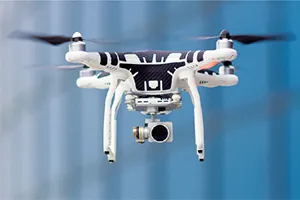
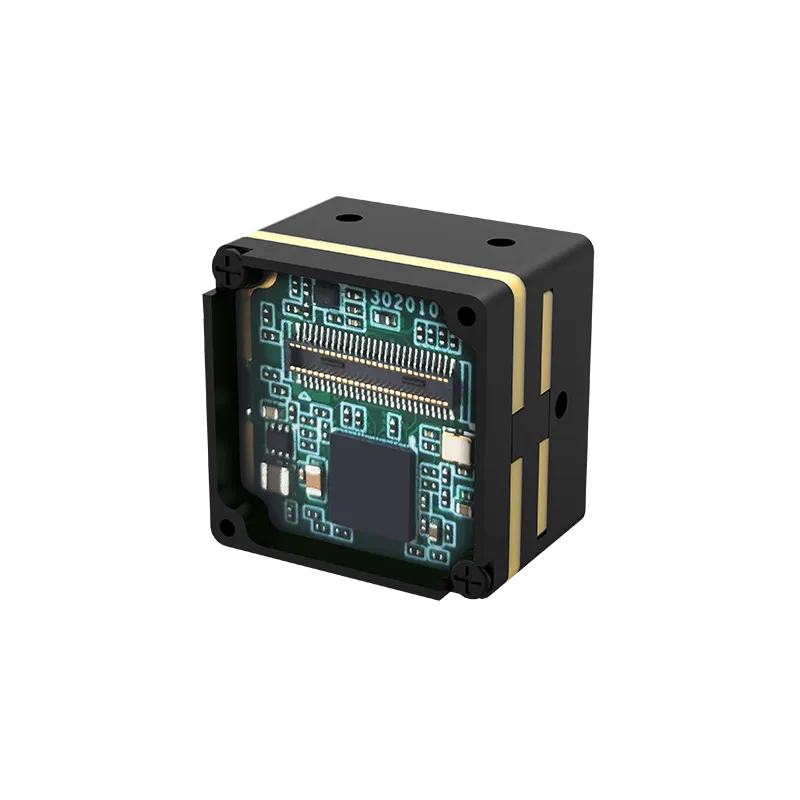
Easy Installation
It is easy to put a thermal camera on your drone. The Turing L256 makes this job simple. Its small size fits inside most drones. The module is only 18×18mm and weighs 8.7 grams. You do not have to worry about your drone getting too heavy. This helps your drone fly longer and carry more things.
You can pick from many ways to connect the camera. The L256 works with DVP, USB 2.0, and analog video. These let you use the camera with many drone controllers. You can also use digital video output or UART for more advanced setups. The camera’s interface matches the L384 module. You can swap or upgrade parts without extra work.
Tip: Pick the lens that fits your tracking job. The L256 supports lenses from 2mm to 13mm. This lets you get the right view for your drone work.
Many people have problems when adding a thermal camera. Some common issues are:
Humidity, clouds, rain, and snow can change thermal accuracy.
Glass and shiny things can mess up thermal readings.
Paint and coatings can change temperature readings.
The time of day and drone angle affect thermal images.
Emissivity, reflectivity, and distance also matter for tracking.
The L256 helps you deal with these problems. Its strong build and smart image processing keep your camera safe and your tracking clear.
Workflow Compatibility
You want your drone to fit your usual work. The Turing L256 works with both hobby and pro drones. You can use it for security, checking things, or rescue jobs. The camera fits many drone models, so you do not need to buy new drones.
The L256 lets you use different lenses. You can change lenses for your tracking or thermal needs. This makes your drone good for many jobs. The camera’s flexible connections let you use new or old systems. You can use DVP for digital video, USB 2.0 for fast data, or analog for older drones.
You want your drone to work in hard places. The L256 can handle tough weather. It works in temperatures from -20°C to 60°C. You can store it in even colder or hotter places. The camera also works in high humidity. Your drone can fly in many weather types and still give good thermal images.
Many people face other problems:
Export rules may limit high-performance thermal cameras.
Rules can stop drones from flying at night.
Thermal cameras often have lower resolution than normal cameras.
Weather like humidity and sunlight can change image quality.
Tracking can change as things heat up or cool down.
Fixing images can change how repeatable they are.
Safety and weather can make drone inspections harder.
Even with these problems, the Turing L256 gives you good tracking and thermal images. You can trust your drone to give clear pictures and correct results. The camera’s design and features make it a great choice for anyone who wants better tracking and thermal work.
Applications
UAV Thermal Imaging
You can use the Turing L256 for many drone jobs. The main use is UAV thermal imaging. When you fly a drone, you want to see heat differences on the ground. The Turing L256 gives you clear thermal images. You can spot people, animals, or machines even in the dark. This helps with drone-person tracking and search and rescue. You can use tracking algorithms to follow moving targets. The module gives you real-time thermal data, so you can make quick choices. You can trust the infrared thermal camera to work in many places, like farms, forests, or cities. The small size and low weight let your drone fly longer. You get better tracking and longer missions. The Turing L256 improves tracking performance for every drone job.
Note: You can use the Turing L256 for drone-person tracking, building checks, and farm work. The module helps you find heat leaks, lost people, or animals at night.
Security & Vision
You can also use the Turing L256 for security and vision jobs. Drones with this module help with surveillance in big areas. You can watch borders, parking lots, or factories. The thermal camera lets you see things that normal cameras miss. You can use tracking to follow people or cars. The module works well with tracking algorithms, so you get smart surveillance. You can use the Turing L256 for head-mounted night vision or machine vision. The small size and low power help you use it in many products.
The Turing L256 helps OEMs and developers in many ways:
You get a small and light module for your drone or device.
You save power, so your drone or camera works longer.
You can use the module in thermal imaging cameras, machine vision, and security.
You can design new products faster and save money.
You get more choices for tracking and surveillance jobs.
You can trust the Turing L256 to give you strong tracking and thermal results. The module fits many drone models and works in tough places. You get clear images for every tracking job.
You can make your drone track things better with the Turing L256 uncooled infrared module. This module is special for drones because it is small, only 18×18mm. It does not use much power, so your drone can fly longer. The module has smart features that help a lot. You get real-time tracking with a fast 50Hz frame rate. The thermal images are clear and easy to see. You can pick different field of view options for your needs. The module works with many drone models. It helps with tracking in hard places.
Feature Aspect | Details |
|---|---|
Size | 18×18mm, lightweight for drone payload |
Power Consumption | ≤0.35W, extends drone flight time |
Resolution | 256×192, sharp tracking images |
Interfaces | DVP, USB 2.0, Analog, easy drone setup |
Drone tracking is changing quickly. New things like AI and better sensors will make drones even smarter. You can be a leader by picking the Turing L256 for your next drone tracking job.
FAQ
What makes the Turing L256 module good for tracking?
The module has smart image processing. It helps you see small heat changes. This makes it easier to track people, animals, or machines. You get clear thermal pictures. You can follow moving things without worry.
Can I use the Turing L256 module on any drone?
You can put the module on many drones. Its small size fits most systems. The flexible connections make setup simple. You do not need special tools for most installs.
How does the module help with real-time tracking?
You see live thermal video with a fast frame rate. This helps you use tracking algorithms to follow moving targets. You can make quick choices because you always see what is happening.
Is the Turing L256 module reliable in harsh environments?
The module works well in tough places. It can handle hot or cold weather and high humidity. Its strong build keeps tracking right, even when the weather changes.
See Also
Vanadium Oxide Thermal Cameras Essential For Rescue Missions
The Importance Of Thermal Imaging Cameras In 2025
Guide To Using Thermal Cameras For Rescue Operations 2025
